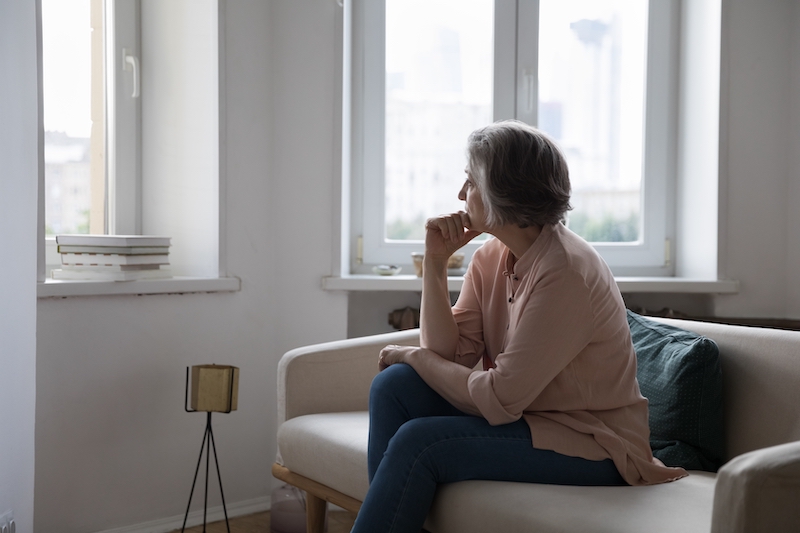For years, women and men have struggled with mental health in different ways. For starters, it is well known that women are more likely to develop depression. That said, men who develop it are three times more likely to die from suicide brought about by depressive symptoms.
So, what are the symptoms of depression in a woman? Women are, in general, more prone to internalization, crying, or internalizing anxiety. Men, who are often raised not to express emotions in that way, externalize their feelings of depression by things like angry outbursts. Men might be more likely to lose interest in activities and be tired in the morning, then irritable throughout the day, while women are more likely to experience secondary stress as a part of their depression, sleep problems, and general sadness. The science backs this up.
What Are the Symptoms of Depression in a Woman
Research involving MRIs and DTIs for depression has found that symptoms of things like major depressive disorder manifest differently in regions of the brain for men vs. women.
So, what are the symptoms of depression in a woman that are different from those of a man?
When women struggle with depression, it manifests with:
- Appetite disturbance
- Sleep impairment
- Depressed mood
All three of these are significantly higher in women compared to men.
Where men with depression might use escaping behaviors like losing themselves in work or sexual activity, women have more frequent depressive episodes, more often with things like anxiety, fatigue, oversleeping, or overeating. Social factors can increase a woman’s susceptibility to depression and depression symptoms. Socially constructed behaviors or gender expressions can make symptoms of depression in a woman much worse. In men, a lack of a partner in the household or a small social network is more likely to predict depression as a man gets older, but this is not the case in women. Women can have a partner and a large social network but still find themselves struggling with expectations, stereotypes, and depressive symptoms.
Science of Brain-Based Sex Differences for Depression
So, what are the symptoms of depression in a woman when looking at the brain?
Research involving MRIs and DTIs for depression found that in women, the orbitofrontal regions of the brain are more highly active in women, the part of the brain that is responsible for higher emotion perception. This can expose women to deeper emotional perceptions of depression and depression-related symptoms.
Moreover, research has found that depression is associated with enlargement of the lateral ventricle cerebrospinal fluid. Other findings show that there are microstructural changes in white matter for those who have depression. Some MRIs revealed a reduction in GM density and the amygdala for women with depression, meaning that women with depression are less likely to have a balance between the prefrontal cortex and the amygdala, leading to higher impulsivity.
Other studies have found that women with major depressive disorder struggle with reduced total brain volume, particularly in the hippocampus, and these reductions are more likely to increase the risks of treatment-resistant depression.
In effect, women not only struggle with different manifestations of depression symptoms and different causes of those symptoms but different structural changes within the brain as a result. Women experience higher symptom severity and are more likely to struggle with a higher lifetime disorder as well as co-occurring anxiety disorders in large part because women with depression end up with smaller amygdala compared to healthy women. A big part of this is also related to the volume changes in gray matter and white matter, often a result of the increased stress that women face. This relates to one of the many ways in which depression manifests differently in women: women are more likely to experience secondary stress as a part of their depression.
Getting Help for Women’s Depression with Casa Serena
If you are struggling with what appear to be symptoms of depression as a woman, you can find help with Casa Serena. We offer a women’s depression residential treatment program.
Casa Serena is a women’s-only treatment center with a range of programs for substance abuse and mental health. Studies confirm that things like mindfulness-based stress reductions can help address the problems with gray and white matter size changes in women. As such, it is important to incorporate such holistic care into depression programs.
Working to improve emotional regulation without allowing it to exacerbate depression is equally important. That is why we include several programs with individual and group therapy, often tied to things like trauma-informed approaches, so that you can overcome societal pressures and traumas that may have contributed to your depression symptoms as a woman.
Overall, women tend to internalize symptoms of depression. With societal factors and external stress, women are more likely to cry and struggle with sleeping and eating habits, whereas men might be more prone to irritability and outbursts. If you are struggling with symptoms of depression as a woman, you can find treatment from a women’s only treatment center that understands the uniqueness of sex-based symptoms of depression.
Reach out to our team today to learn more.



